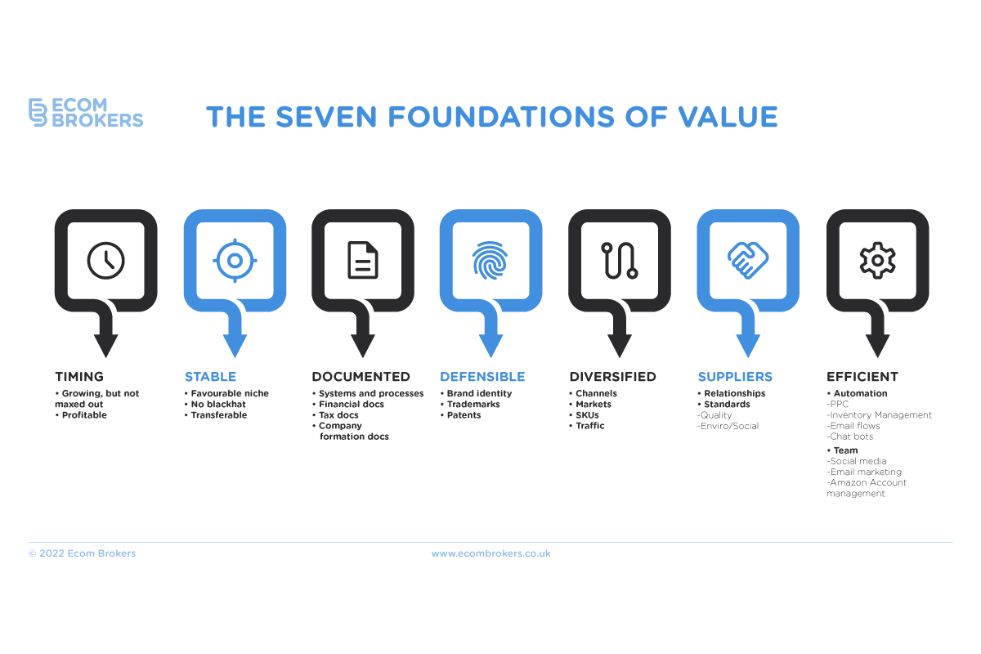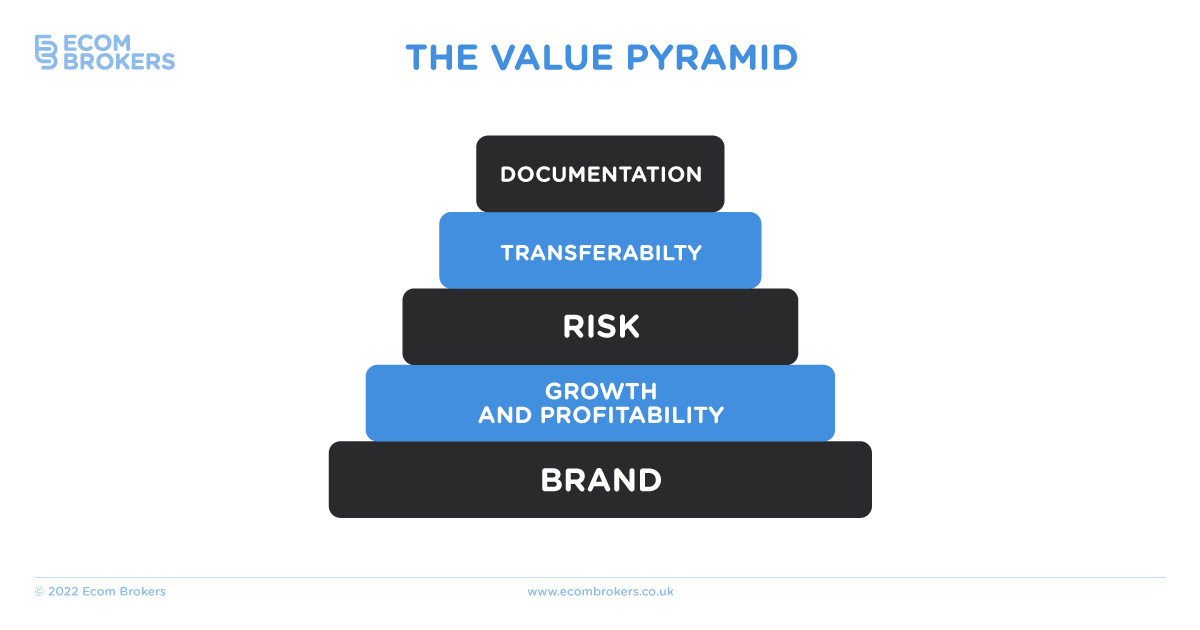
The One Year Exit Plan
We often stress the importance of creating an exit plan to maximise your company’s value.
And it’s true: a solid exit strategy is critical to maximising profits and avoiding losses. And selling a business for its true value cannot be done overnight.
Instead, exiting a business has to take time – as much as a year.
In this article, we’re going to take a look at the One Year Exit Plan.
Over the course of a year, we’ll show you exactly how to prepare your company for sale. We will:
a) get the price you deserve for it and
b) you’re able to move on to your next venture with your head held high.
Why Do You Need A One Year Exit Plan?
Let’s say there’s a business owner who’s determined to sell right now. He doesn’t want to wait another six months or a year; he wants to get his business onto the market immediately and sell it within a few weeks. He asks us to take a look at it: assess, weigh and price it up.
We take a look and we value it at around £250,000.
“Cool,” he says. “I’ll sell it.”
“If you wait a year and use that time to improve your business, you could sell it for around £325,000”, we say.
He thinks about this for a few seconds, but ultimately turns us down.
“I just wanna move on.”
Because this business owner turned down the chance to create an exit plan, he did himself out of £75,000. He didn’t get what he deserved for his business. After 5+ years of solid hard work, he didn’t create an exit plan, so much of it went to waste.
An exit plan, then, is just as important as anything else you’ve worked on over the last few years. The final few months of your business are critical to maximising your profits when it comes time to sell.
A year, meanwhile, might seem ultra-specific, but it gives you just enough time to get everything in order without sacrificing too much of your time.
So let’s start with …
The First Quarter
Before you do anything else, get a valuation for your business as it stands right now. Find out how much it’s worth. Don’t be discouraged or encouraged by the figure. Just know that, whatever the figure is, it can be added to over the next few months.
Then, you should optimise your current business operations.
What does this mean?
In order to bump up the value of your business over the next 12 months or so, certain aspects of it will need to be optimized – and, indeed, overhauled altogether.
If there are specific areas of your business that need an overhaul in order to improve the value of your business, now is the time to make those changes. Making the changes now gives you enough room in which to: a) implement the changes and b) witness them take effect.
For example, you might want to:
- Automate
- Diversify
- Sign new contracts with suppliers
- Outsource
- Build a brand around your business
In short, your objective right now is to make sure the next twelve months are more profitable than the previous twelve. The way you do this is by looking at areas of your business that can be improved.
Automation is a good example because, when your systems are automated, any potential buyer will have less work on their hands. They can take over your business in the knowledge that this is a well-oiled machine. Automation by itself can improve the value of your business immeasurably.
Track Your Personal Expenses
At this point, you should start tracking your business-related personal expenses. You can add them back when selling your business, but you must prove they were all personal.
Some will be easy to prove, but others – such as business travel-cum-leisure time – will be harder.
Select An Accounting Method
Do you use an accounting method at the moment? If so, which one?
If not – start doing so! Now.
Accounting methods – cash basis versus accrual – are a key component of your exit plan, and they can either help to increase the value of your business, or decrease it.
Most businesses in our experience use both the cash basis and the accrual basis methods, but whichever one you use, you need to clean them up ASAP. By using an accounting method, it will be so much easier to verify everything when it comes time to putting your business on the market.
Organize Your Records
Now is the time to start organizing your records. Don’t worry if your records aren’t very well organized at the moment; there’s still plenty of time to sort this out. However, if you haven’t organised your records at all up until now, just know this – you might be spending most of the next three quarters bringing them into line.
The Second Quarter
The best way to start your second quarter is to talk to a QLB advisor who can give you an update on your business’s health.
This means they can show you how far it’s come since you began working to increase its value.
You should also personally take a look at your revenues and profits to see whether they’re on an upward trend or not. They should be on an upward trend by now. If they aren’t, you need to find out why. If you don’t do this, it will become harder and harder to exit your business the way you hoped.
Check Your Digital Marketing
Next, it’s time to assess what kind of state your digital marketing is in at the moment. Take a look at your website and see if there are any broken links, dead pages and generally any holes in your SEO campaign. Broken links might seem like minor things, but when it comes to SEO, they’re actually quite big. And they can shave a little bit of value off your business.
That said, if you’re not an SEO expert, it’s probably a good idea at this point to bring someone in whois. You can hire a remote consultant to give your website and SEO campaign a proper analysis. They will be able to find any gaps in your SEO content marketing campaign, as well as any weaknesses in your website. It may be the case that your digital marketing campaign needs an entire overhaul. If it does, it’s best to find out sooner rather than later, as it will form a key part of your exit plan.
Improve Your Record Keeping
Lastly, you should make an effort at this stage to improve your record-keeping in terms of tracking conversion rates (you can use free tools like Google Analytics to help with this), as well as how you’re currently spending your working hours. Tracking your business hours is just a good way of showing any prospective buyers how they’d have to spend their daily and weekly hours if they took over your business.
It’s also a smart idea to gather together your official business documents – business licenses and so on – and digitalise them.
Third Quarter
You’ve now reached the halfway point of the One Year Exit Plan! Congratulations on your progress, but there is still much to do.
Now that you’re at the halfway point, it’s time to find out the current value of your business, and you can use a QLB advisor for this purpose. If it turns out that your profits and revenues are actually down, you need to find out why as soon as possible. It’s never too late to reverse revenues and profits, but at this stage, it’s a lot more ideal if they’re heading in an upwards trajectory or, at the very least, they’re stable.
Check-In Again On Your Digital Marketing
Then, check back in with the SEO consultant you hired during the second quarter to see how your digital marketing is looking at the moment. It’s unlikely that any changes you made last time around have had a hugely positive impact just yet. What’s more important is that you took care of any big mistakes that were found, like broken links.
We also recommend that you identify any redundant job roles during the third quarter of the One Year Exit Plan. Ideally, you want to sell a lean business, so cutting any unnecessary job roles is fundamental to your exit plan.
Contact Vendors & Collect All Statements
Contact your vendors, too, and ask them if they’ll be making any big changes over the next few months. This could include new product lines, a policy amendment or even price changes. You’ll need to know exactly what these are a few months before you put your business up for sale because they could easily make or break any deal you put in place with a prospective buyer.
It’s during the third quarter that you could also collect all statements from vendors and merchandisers, as well as bank statements and invoices. Organise them then you can do your due diligence in the right way. Indeed, any potential buyer will expect to see records that date back to the last three years. It’s a smart idea to invest in bookkeeping software, too, such as QuickBooks to align your books and get them ready for your sale.
Fourth Quarter
Okay, great! You’ve made it to the fourth and final quarter of the One Year Exit Plan. You’ve almost prepared your business for sale and can soon take it to market.
Before you take it to market, get one last valuation of your business. This will help you decide whether or not now really is the best time to sell it, or whether you should keep making improvements with a view to selling it a little bit further down the line.
Finalise
It’s now time to finalise your operations. This means finalising a time to sell, finalising your digital marketing campaigns, and making any last changes to your website/online store. Your marketing campaigns must be ready now, and it’s important that you don’t make any significant changes at this point. Why? Because you simply won’t know what kind of impact they will have on your business or the sale of your business.
Then, finalise your records. These things need to be in one place, so put them all together and make a hard copy that is easy to scan. You should also put together a financial due diligence package, too, as this is what will walk a prospective buyer through your statements – invoices, bank statements and so on.
We also recommended creating ancillary reports as well, including the number of orders each month, reorder rates and so on.
After this, your One Year Exit Plan is complete and you’re ready to market your business.
Remember that there is still work to be done, and you can learn more about preparing your business for sale, increasing its value, and working with brokers to negotiate the best price on our blog.
Ready to sell your business for the best possible price? Start by clicking the link below! No obligation, no hard sell. Just solid, professional advice.









